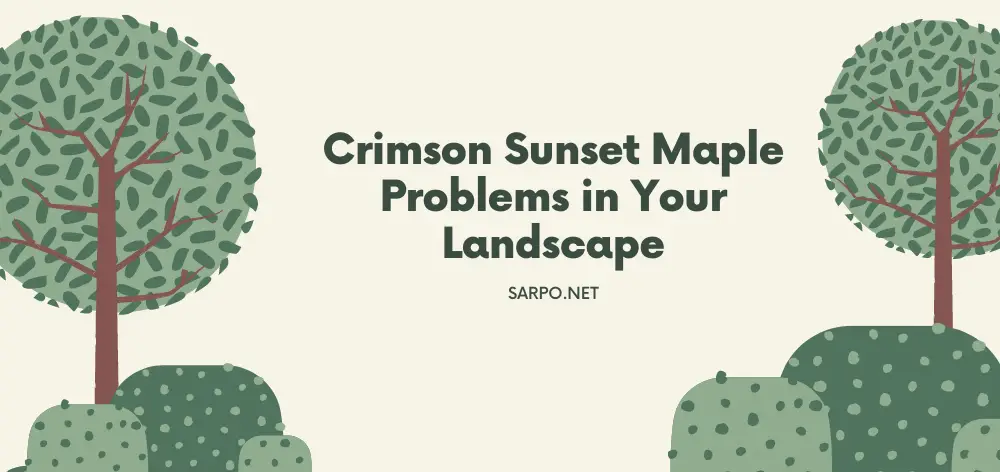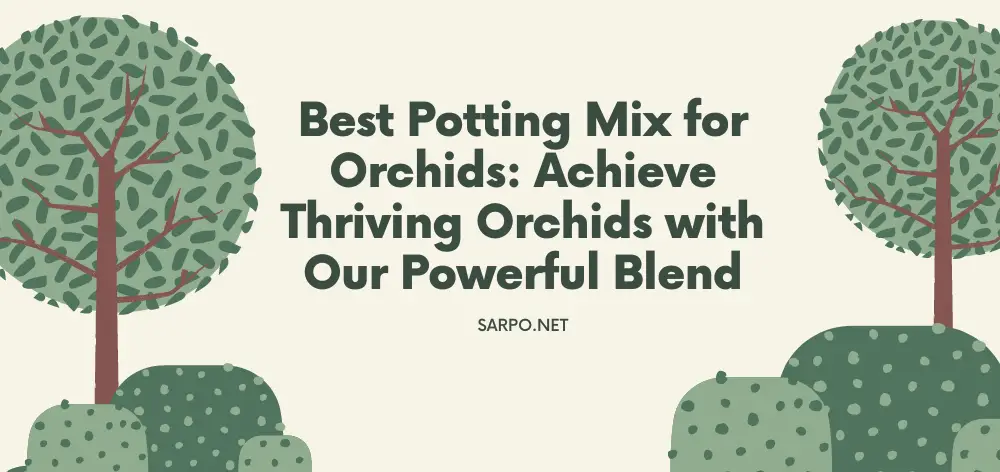
Understanding and Managing Crimson Sunset Maple Problems in Your Landscape
Picture this: you’re lounging in your backyard, sipping a refreshing lemonade, and admiring the scenic beauty around you. The trees sway gently, painting the sky with hues of red, orange, and purple as the sun begins its evening descent.
And there it is, standing tall and majestic, the Crimson Sunset Maple, the jewel of your landscape! But wait, what’s that? Is it just you, or is it looking a bit under the weather?
Ah, the joys and challenges of owning a beautiful Crimson Sunset Maple tree! Whether you’re a seasoned gardener or a newbie green thumb, these marvelous maples can sometimes bring us a little trouble in paradise. But fear not! In this article, we’ll uncover the nitty-gritty of the common issues that might crop up with your Crimson Sunset Maple and how to address them like a pro.
Discover leaf discoloration mysteries, tackle pesky pests, and enjoy funny anecdotes from fellow tree enthusiasts to ensure your Crimson Sunset Maple stays in its prime.
So, if you’re curious to keep your Crimson Sunset Maple happy and healthy while enjoying a good laugh or two, grab your gardening gloves, and let’s dive into the wonderful world of Crimson Sunset Maple problems!
Does Red Sunset Maple Have Invasive Roots?
Red sunset maple (Acer rubrum ‘Franksred’) is a popular ornamental tree that is often planted in residential yards. However, like all maples, red sunset maple has invasive roots that can cause problems for nearby homeowners. If you are thinking about planting a red sunset maple in your yard, be sure to take steps to prevent its roots from causing damage to your property.
The most common problem caused by invasive tree roots is damage to sewer lines and other underground utilities. Tree roots can grow into small cracks or openings in these pipes and then expand, eventually causing the pipe to break or collapse. This can lead to costly repairs for the homeowner.
In some cases, tree roots can also cause foundation problems as they push up against the home’s foundation. To avoid these problems, it is important to plant red sunset maple trees at least 20 feet away from any structures on your property (including your house, shed, garage, etc.). It is also important to keep the tree’s roots trimmed back so that they do not encroach on any underground utilities.
By taking these precautions, you can enjoy the beauty of this ornamental tree without having to worry about its damaging effects on your property.
Is Sunset Maple a Good Tree?
There are a few things to consider when deciding if a Sunset maple is the right tree for you. Here in the Pacific Northwest, our climate is ideal for these maples. They’re also tolerant of different soils, from sand to clay.
And, they do well in both full sun and partial shade. One downside is that they can be susceptible to mildew and aphids, but regular spraying can help keep those problems at bay. Overall, Sunset maples are good trees that provide lovely Fall color.
How Fast Does a Crimson Sunset Maple Grow?
A crimson sunset maple is a relatively fast-growing tree, typically reaching a height of 20 to 30 feet within 10 to 15 years. Once established, growth rates may slow somewhat, but the tree will still add several feet of height each year. Crimson sunset maples are generally hardy and adaptable trees, able to tolerate a wide range of growing conditions.
They prefer full sun but will also do well in partial shade, and are tolerant of both dry and moist soils.
How Big Does a Crimson Sunset Maple Get?
A crimson sunset maple is a deciduous tree that can grow to be between 15 and 25 feet tall. They are relatively fast growers, adding 2 to 3 feet per year. Crimson sunset maples have a rounded shape with dense foliage.
The leaves are deeply lobed and turn a brilliant red in the fall. The bark is smooth and gray with a reddish tinge. Crimson sunset maples are native to China and Japan but have been introduced to North America where they are widely grown as ornamental trees.
Crimson Sunset Maple Pros And Cons
Crimson Sunset Maple Pros And Cons When it comes to maples, there are a lot of different options to choose from. If you’re looking for a crimson sunset maple, you may be wondering about the pros and cons of this type of tree.
Here’s what you need to know.
Pros:
- Striking and vibrant autumn foliage adds visual appeal to any landscape.
- A fast-growing tree, quickly providing shade and privacy.
- Low maintenance and easy to care for once established.
- Tolerant of urban conditions, making it suitable for various environments.
- Attracts wildlife like birds and butterflies, enhancing your garden’s ecosystem.
Cons:
- Susceptible to leaf scorch in hot and dry climates.
- Prone to root girdling if not properly planted or maintained.
- May develop surface roots, requiring careful consideration during landscaping.
- Vulnerable to aphids and scale insects, necessitating occasional pest management.
- Limited lifespan compared to other tree species, averaging around 15 to 20 years.
Crimson Sunset Maple Tree Facts
Crimson Sunset Maple Trees are a hybrid between the Norway Maple and the Silver Maple. They are a deciduous tree that is known for its beautiful fall color. The leaves of the Crimson Sunset Maple turn a deep red in the fall, hence its name.
These trees are relatively easy to care for and make an excellent addition to any landscape.
Here are some more facts about Crimson Sunset Maple Trees:
- They can grow up to 40 feet tall and have a spread of 30 feet.
- Their roots are shallow, so they need to be watered regularly during dry periods.
- They prefer full sun but can tolerate some shade.
- They are tolerant of different soil types but prefer moist, well-drained soils.
- Their branches are strong and resistant to breakage, making them ideal for areas with high winds or heavy snowfall.
Crimson Sunset Maple Vs Crimson King Maple
When it comes to choosing a maple tree for your landscape, there are many different factors to consider. Two of the most popular varieties are the Crimson Sunset Maple and Crimson King Maple. So, how do you choose between the two?
The Crimson Sunset Maple is a hybrid of the Japanese maple and the red maple. It’s known for its vibrant red leaves, which turn a deeper crimson in the fall. This variety is also relatively low-maintenance and can tolerate a wide range of soil types.
The Crimson King Maple is another hybrid, this time between the Norway maple and the silver maple. It’s distinguished by its deep purple leaves, which hold their color throughout the growing season. This variety is also tolerant of different soil types but may need more water than other maples during periods of drought.
So, which one is right for you? If you’re looking for a showstopping centerpiece for your yard, go with the Crimson King Maple. If you want a reliable performer that requires less care, go with the Crimson Sunset Maple.
Crimson Sunset Maple Full-Grown
Crimson Sunset Maple is a deciduous tree that is native to the eastern United States. It typically grows to a height of 40-60 feet and has a spread of 30-40 feet. The leaves are opposite, simple, and lobed with serrated margins.
The upper surface of the leaf is dark green and the lower surface is lighter green. The leaves turn crimson in the fall. The tree produces small, yellow flowers in the spring which are followed by samaras (seed pods).
Crimson Sunset Maple prefers full sun to partial shade and moist, well-drained soils. It is tolerant of urban pollution and salt spray. This tree should be planted in an area where it will have room to grow because it does not tolerate pruning well.
Frequently Asked Questions:
What is the problem with the Crimson Sentry maple tree?
The Crimson Sentry maple tree (Acer platanoides ‘Crimson Sentry’) can face issues such as aphid infestations, root girdling, disease susceptibility, invasive roots, specific soil and climate requirements, and weak limbs.
Why is my crimson maple dying?
Crimson maple trees can die due to various factors, including pests, diseases, poor soil conditions, water stress, and environmental stressors. Identifying the specific cause is crucial for effective treatment or prevention.
How do you save a dying maple?
To save a dying maple tree:
Identify Problem: Determine the cause (pests, disease, drought).
Water Adequately: Ensure consistent, deep watering.
Prune Dead Branches: Remove diseased or dead limbs.
Improve Soil: Amend with organic matter for better nutrients and drainage.
Fertilize if Needed: Address nutrient deficiencies.
Pest/Disease Control: Treat with appropriate methods.
Mulch: Apply mulch for moisture retention.
Consult Arborist: Seek professional help if problems persist.
Conclusion
Crimson Sunset Maple trees are a popular choice for landscaping because of their bright red leaves. However, these trees can be susceptible to a number of problems, including leaf spots, powdery mildew, and Verticillium wilt. Leaf spot is caused by a variety of fungi and can cause the leaves to turn brown or black.
Powdery mildew is another fungal disease that can cause the leaves to become covered in white powder. Verticillium wilt is caused by a soil-borne fungus and can affect the tree’s vascular system, causing the leaves to wilt and drop off.
Related Topics
10 Best Small Evergreen Trees with Non Invasive Roots
 Dr Ahsanur Rahman, PHD
Dr Ahsanur Rahman, PHDPine Tree Rescue: Saving Pine Trees with Brown Needles
 Dr Ahsanur Rahman, PHD
Dr Ahsanur Rahman, PHD





